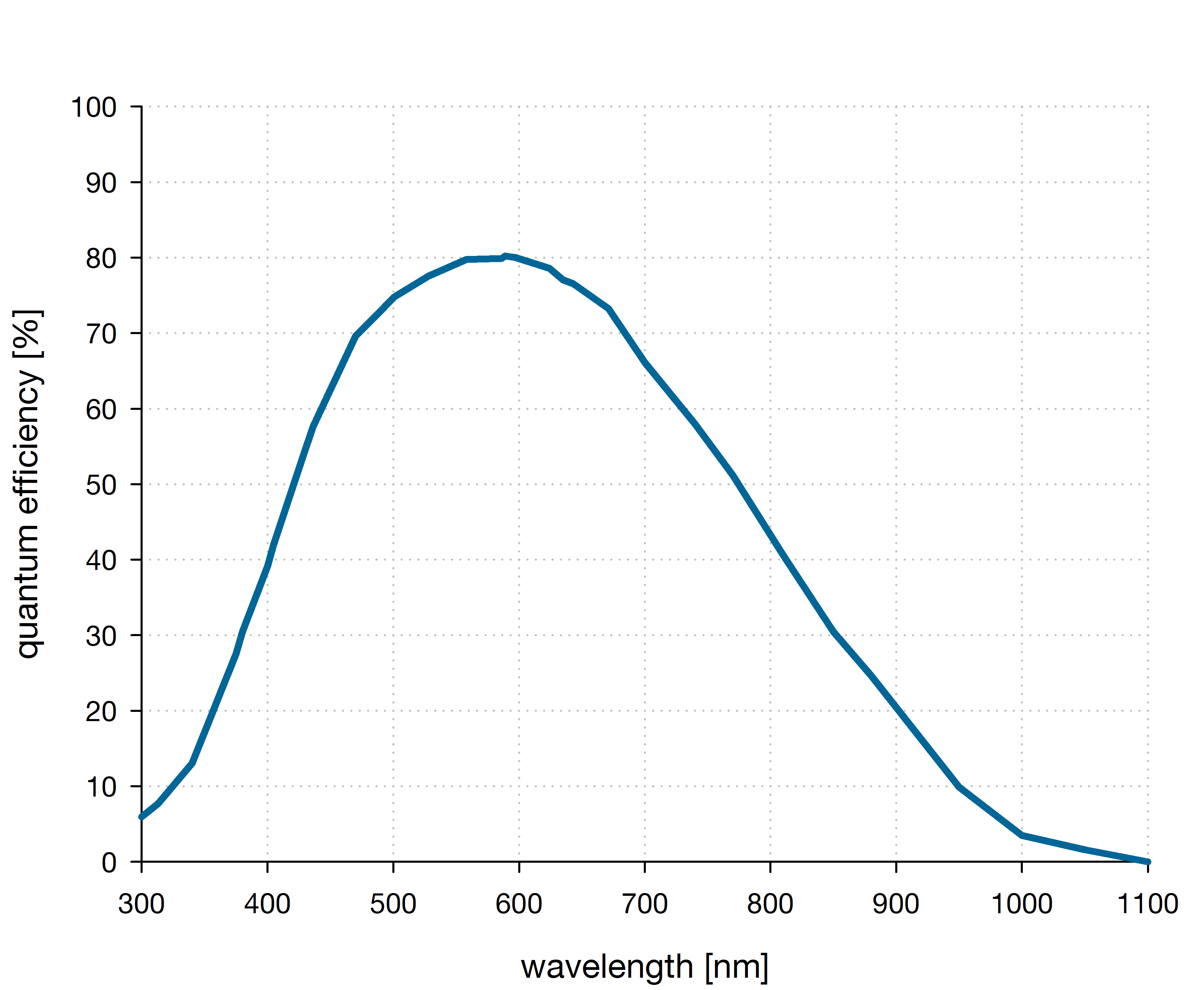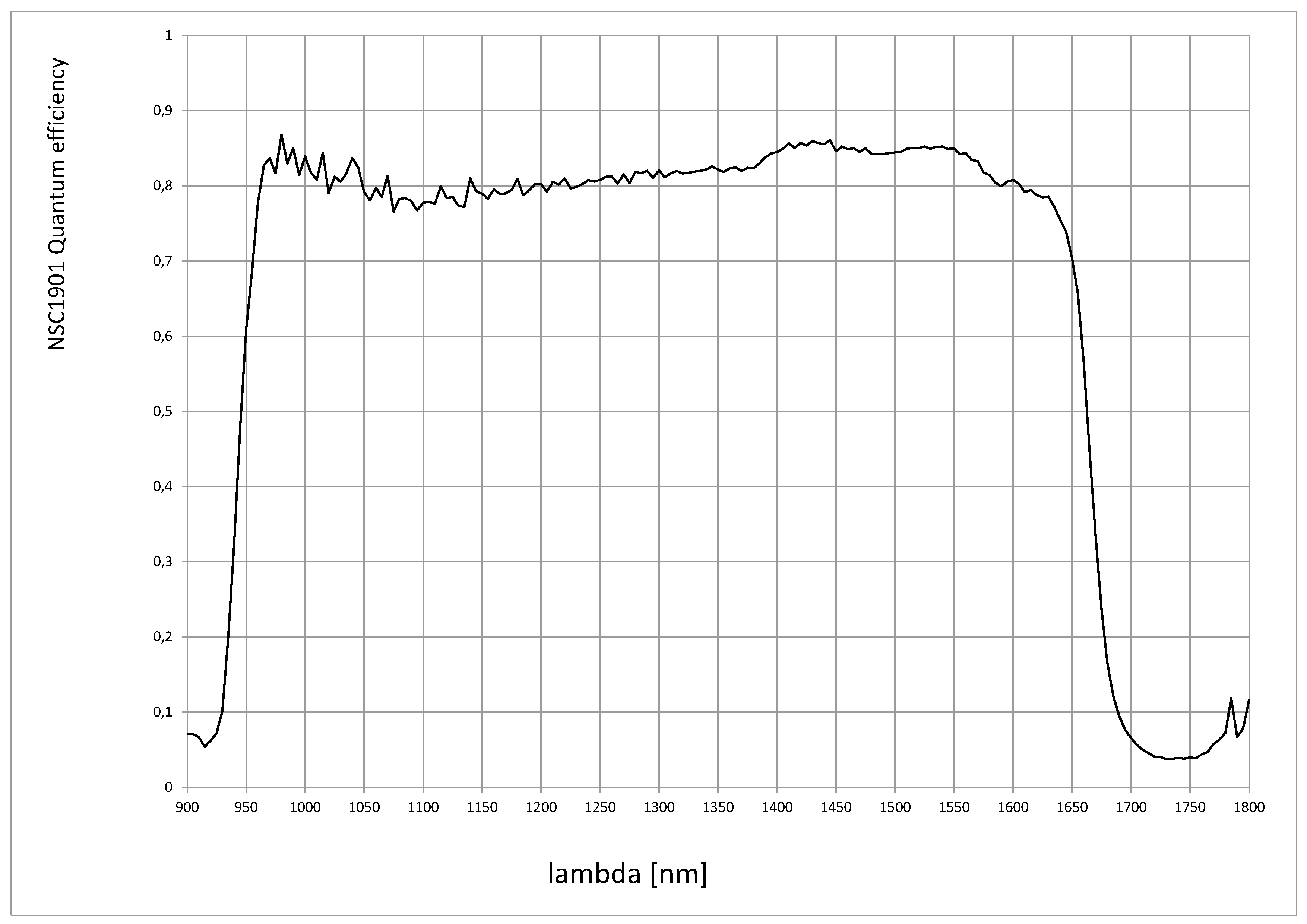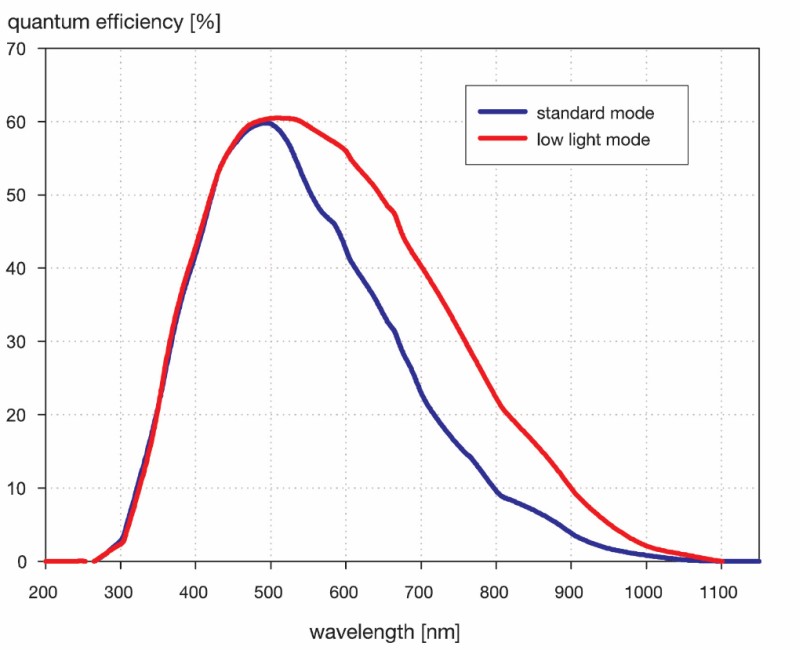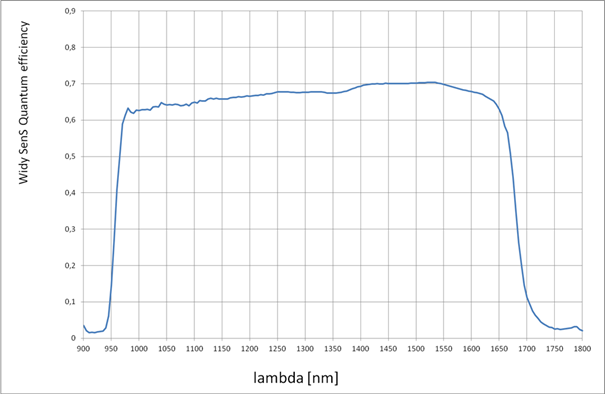Depending on your conditions for testing of photovoltaic cells, modules or panels (laboratory or plant, surface to be inspected, night or day, etc.) it will be more advisable to use InGaAs or silicon sensors.
Emission band in the Si electroluminescence process is centered at 1,150 nm.

This makes the InGaAs sensors (900 - 1700 nm) have the highest sensitivity for this kind of measurements. Unfortunately, cameras based on InGaAs technology are expensive and exceeding 640x512 px resolutions will make purchasing equipment even more expensive. If the surface required to inspect is small or you don't need to resolve small details, InGaAs sensors can be perfect in order to maximize measurement sensitivity.
The manufacturer of New Imaging Technologies (NIT) offers InGaAs cameras NIT-WiDy-SWIR, ideal for testing in different conditions due to its very large dynamic range (120dB). With 320x256 and 640x512 px sensors, these cameras are currently used for inspection of PV cells or modules in laboratory, or mounted in drones to inspect photovoltaic plants due to their low weight and consumption (TEC not required).
If the sensitivity needs to be maximized, for example in measurement of photoluminescence applications, it will be necessary to use the linear mode that incorporates the NIT-WiDy-SenS models, together with the high dynamic range mode.
If, on the other hand, what you need is the sensitivity and efficiency of InGaAs, but with a higher resolution, we can offer you a 1280 x 1024 px camera with an excellent quantum efficiency greater than 85%: NIT-SenS-1280. Therefore this camera is the best fit for test photoluminiscence.
For measurement in the production line of photovoltaic solar panels, the best solution may be our InGaAs NIT-LiSa-SWIR line-scan camera. With a linear sensor of 2048 x 1 px, sampling rate of 60 KHz (60,000 fps) and quantum efficiency of 85%, it is an InGaAs camera with high sensitivity, high speed and high linear resolution.
If the camera resolution is important to your PV application and InGaAs models do not reach it, it may be convenient to use scientific grade CCD cameras enhanced in the NIR. For less than € 5K, the pco.pixelfly offers 1392x1040 px with a quantum efficiency close to 10% at 900nm in IR mode. This sensitivity, the long integration times allowed (up to 60 s) and the price can make it perfect for EL testing.
And if you want to improve the sensitivity and the resolution, the pco.edge 4.2 LT is a camera with scientific sCMOS sensor that presents 20% quantum efficiency at 900nm, adding a spacial resolution of 2048x2048 px and 16-bit dynamic range.
Quantum efficiency pco.edge 4.2 LT | Quantum efficiency NIT-SenS-1280 |

| 
|
| Quantum efficiency pco.pixelfly | Quantum efficiency NIT-WiDy-SWIR/SenS |
 |  |
An additional advantage of the pco.edge 4.2 LT in front other more expensive cameras is the stabilization at "only" +10ºC. It has been proven that the cooling of Silicon (material of the sensor) is contraproductive for the NIT detection (emission range of the electro luminiscence). Therefore this camera better addresses the detection at high wavalengths (not only for electroluminiscence test) than for instance its sister and more expensive camera pco.edge 4.2 bi, back-illuminated and with a cooler sensor.
In addition the very low noise of 0.8 e- is ideal for low light applications in general.
The only trade-off is the limitation to 10s integration time.
So, if the 640x512 resolutions is enough, the efficiency of the InGaAs SWIR cameras is unbeatable. If you need higher resolution 1280x1024 the NIT-SenS-1280 offers superior quantum efficiency in addition.
But if you need still higher resolution or the budget is limited, the pco.edge 4.2 LT with sCMOS sensor is the best chice for electroluminiscent, photluminiscent or in general photovoltaic test.
Similarly there are different electroluminiscence devices and lamps, like airport beacons or others. Contact us to evaluate the most suitable test camera depending on the emission wavelength range.
